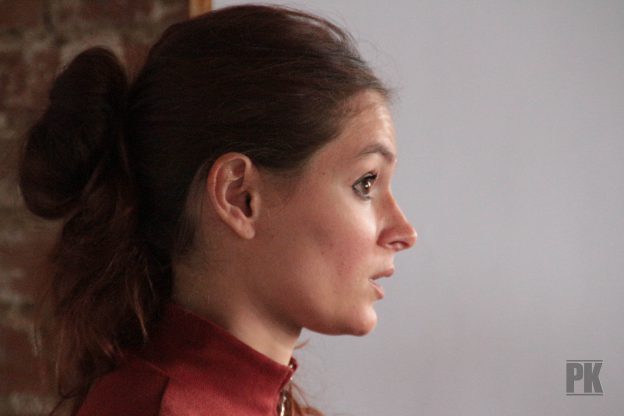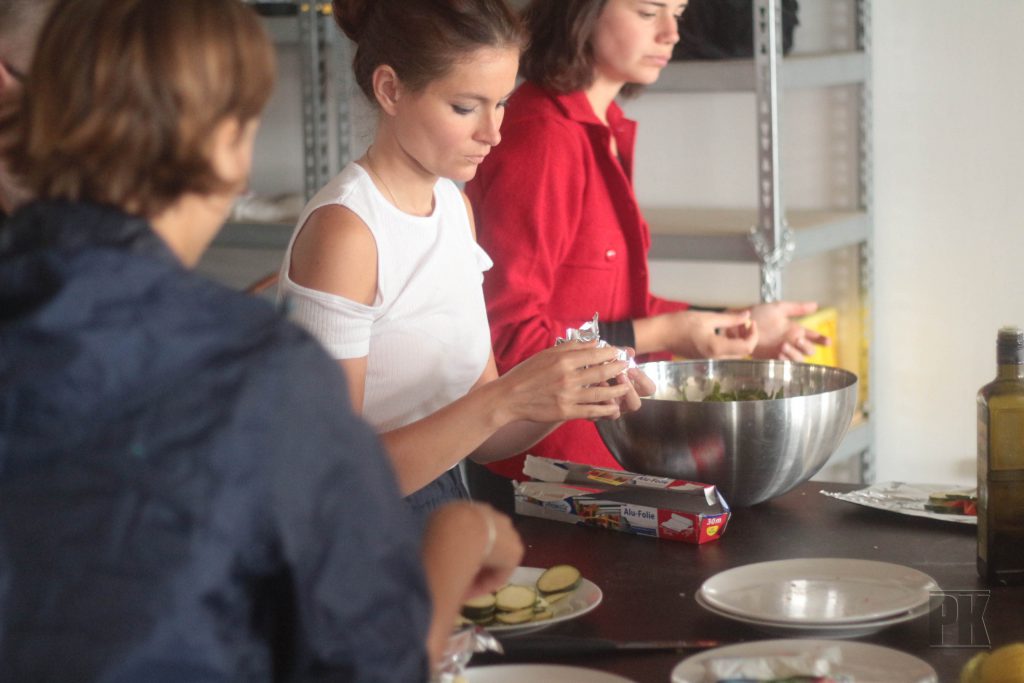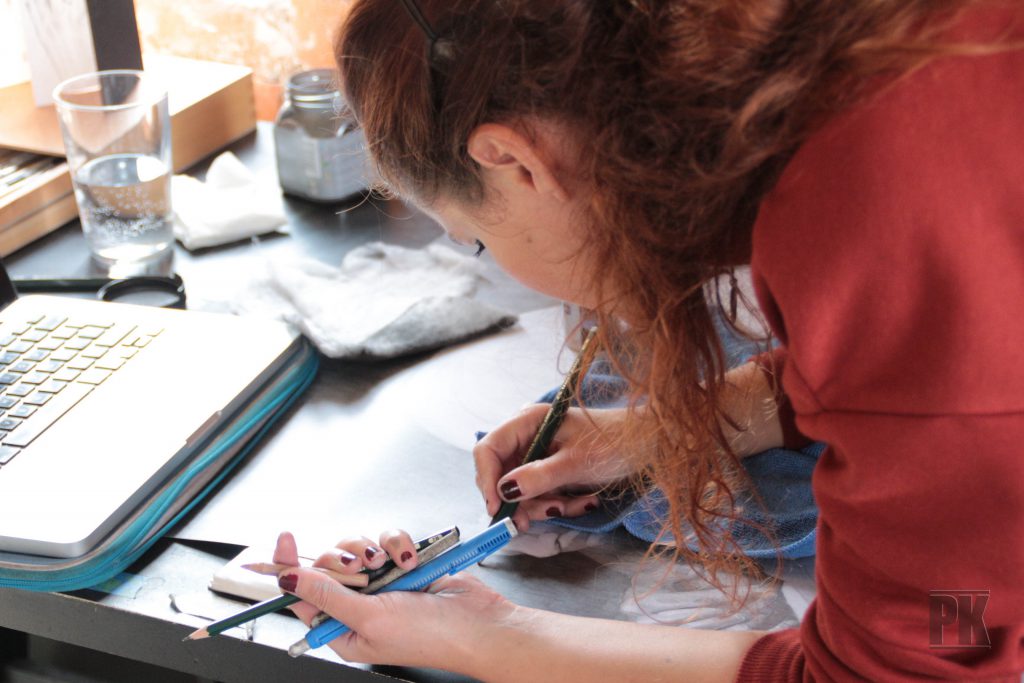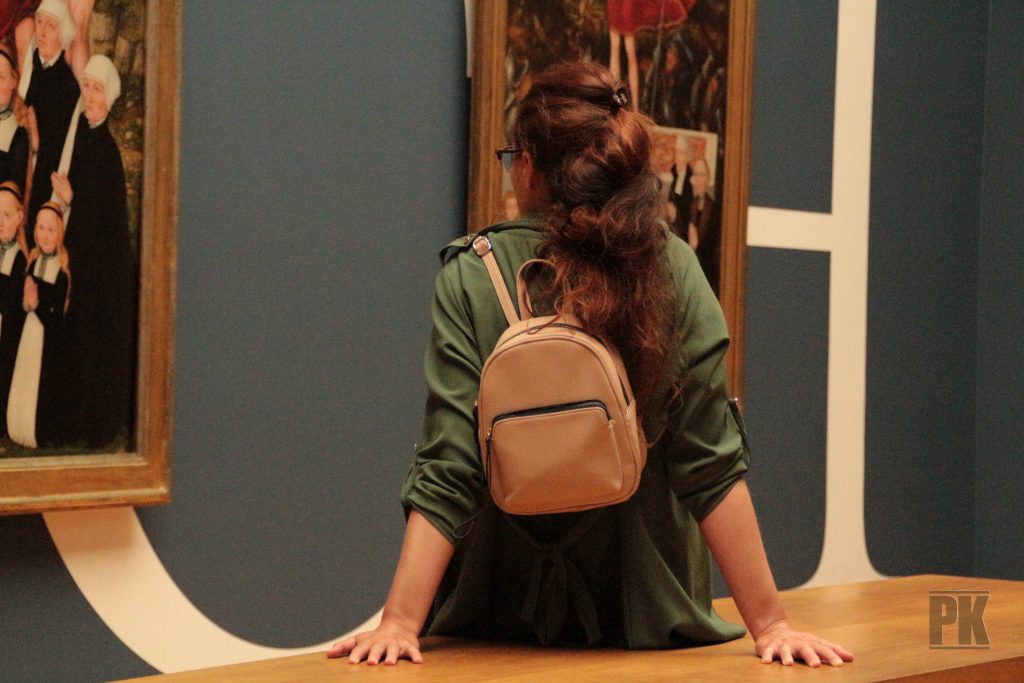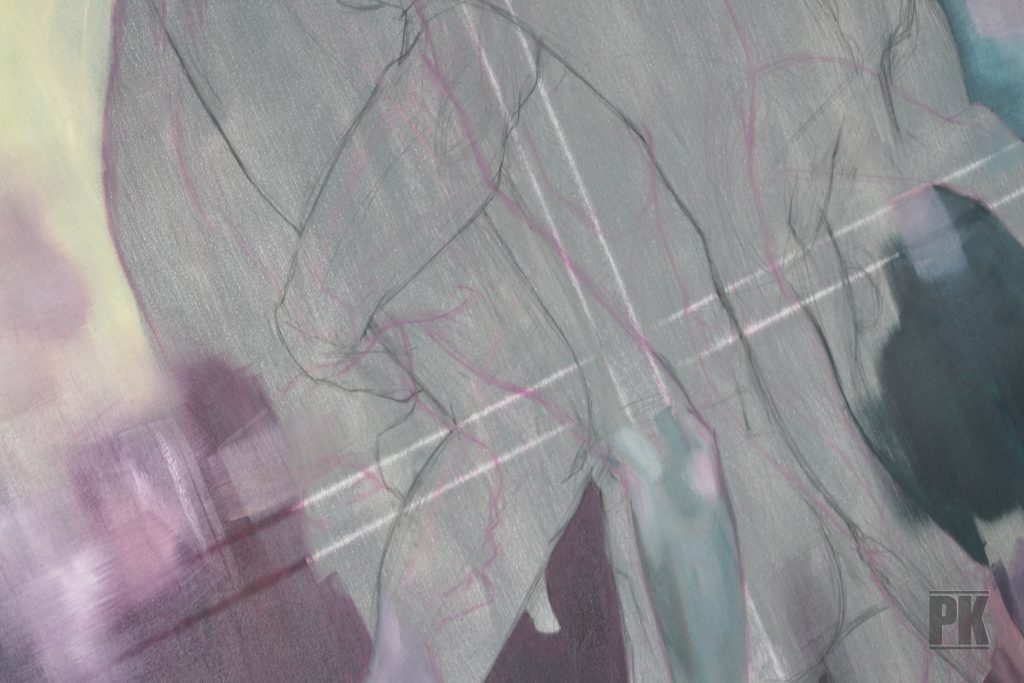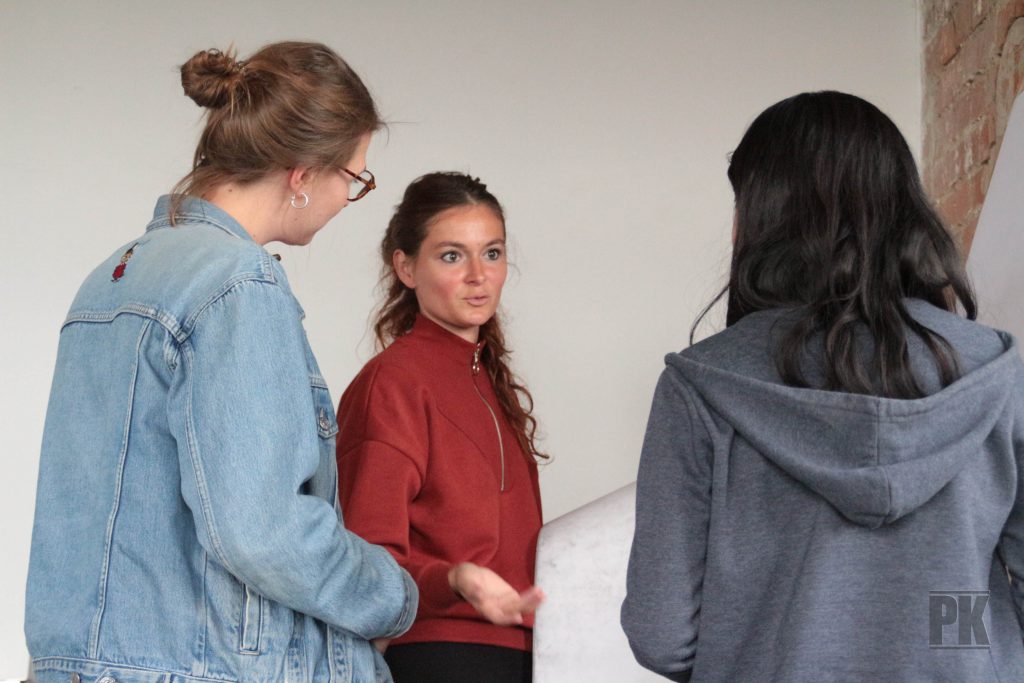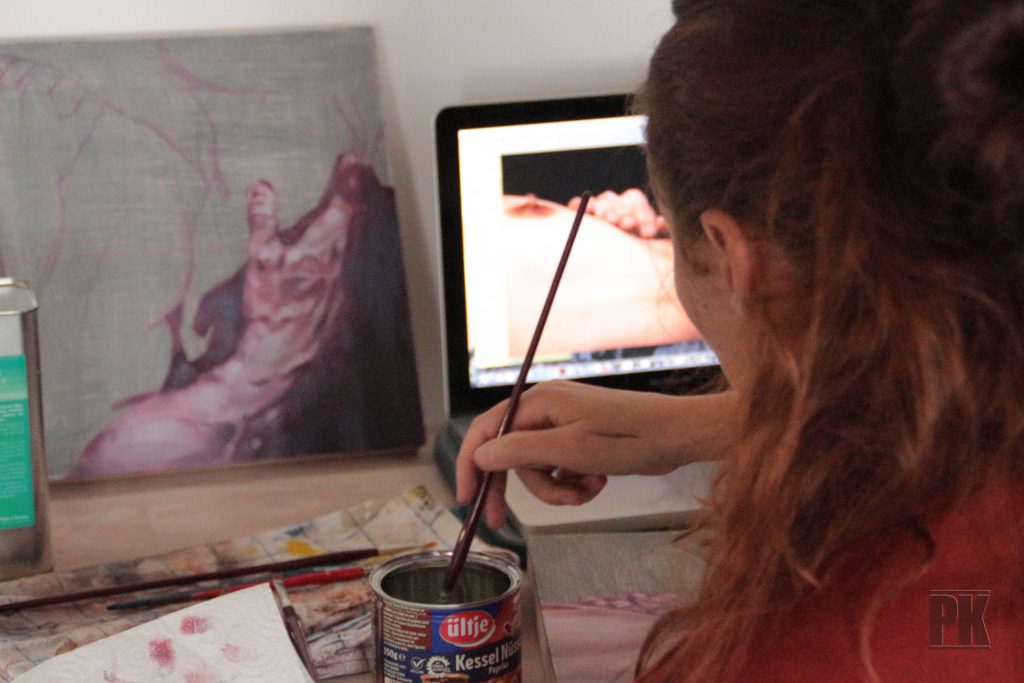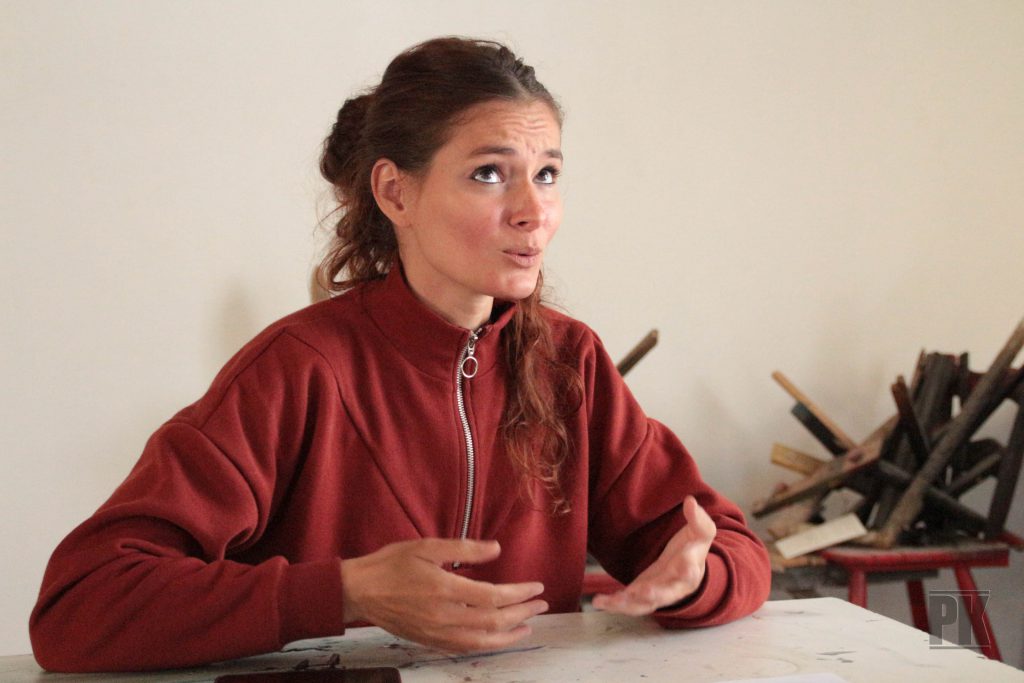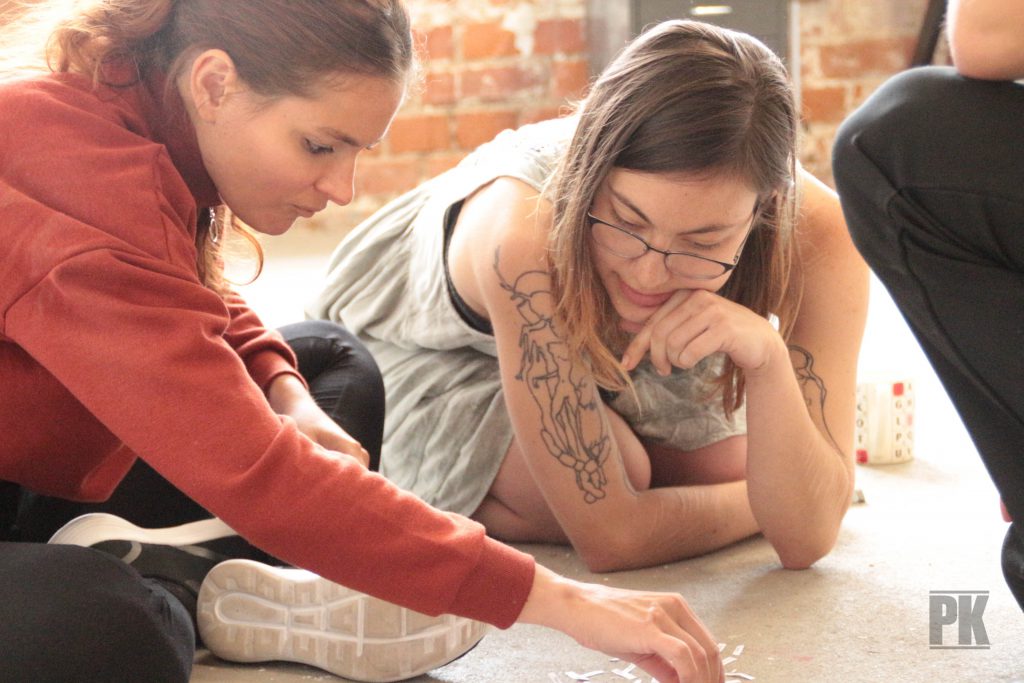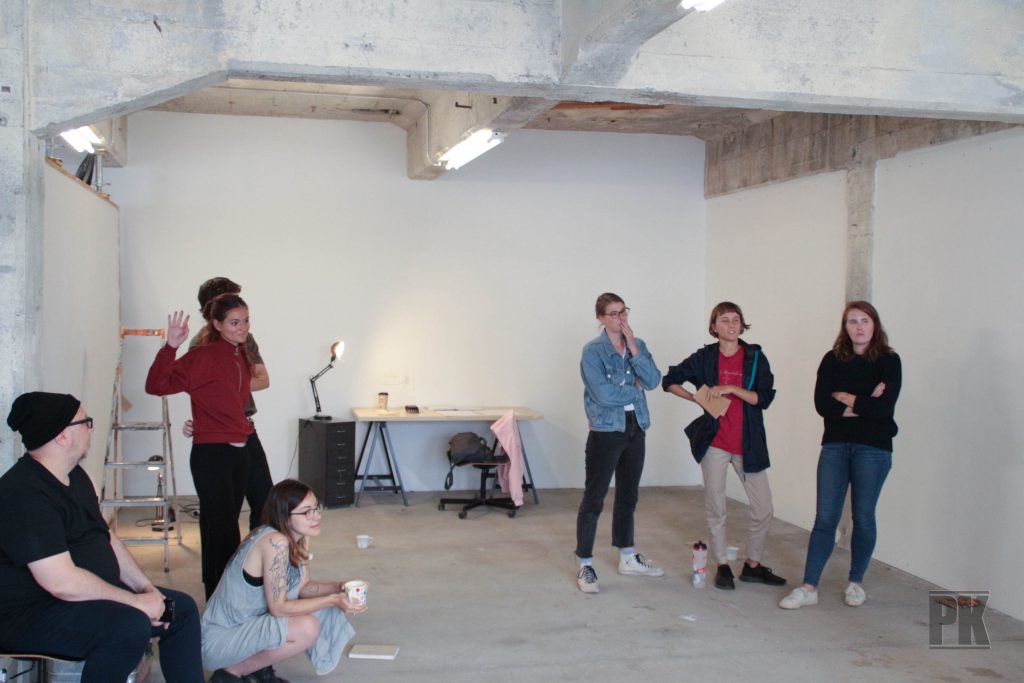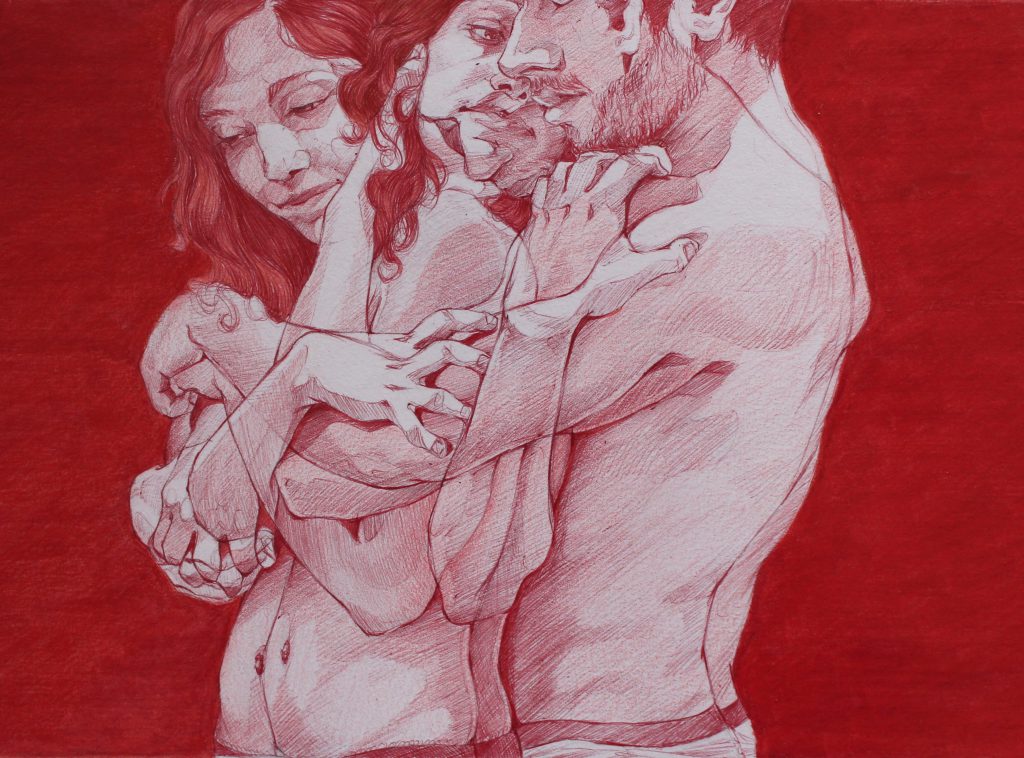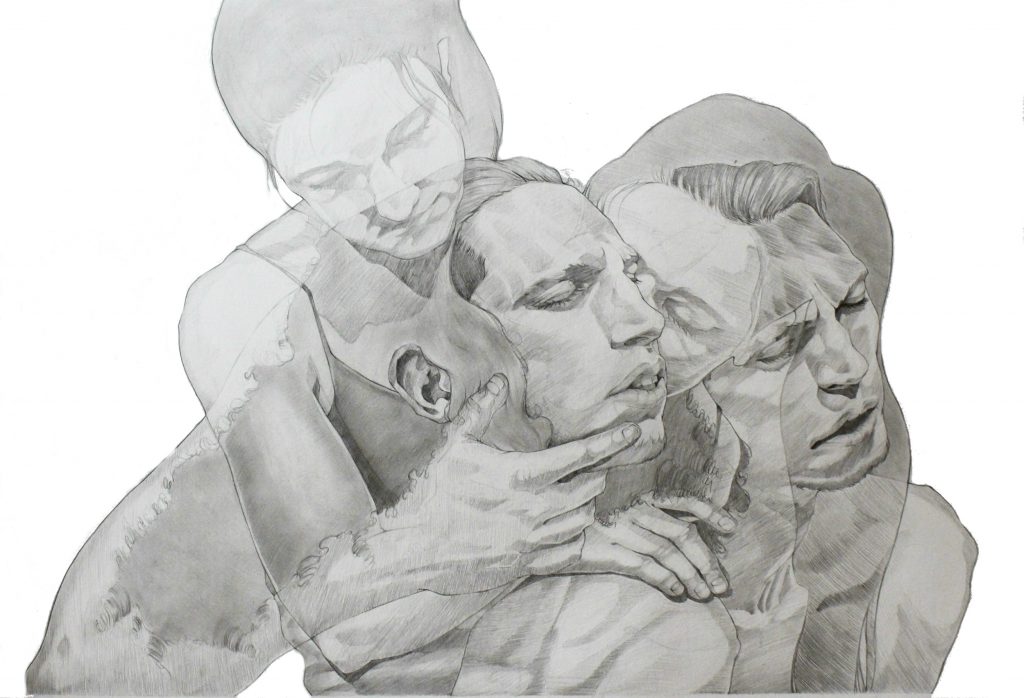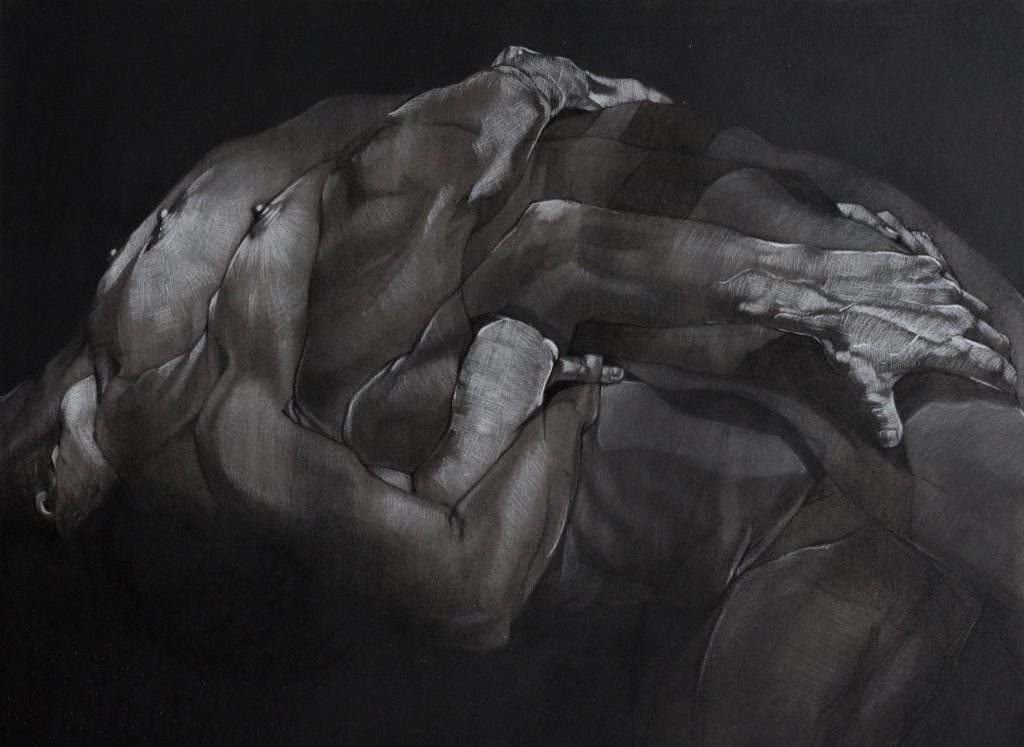“Artists have to ask themselves: Does my art matter in respect of my death? Does it change something? Does it speak to somebody? Does it make a difference?.” Questions like these are the guiding precepts by which Hélène Planquelle works. Heavily influenced by her humanities studies, Hélène’s practice centres upon philosophical principles concerning subjects like social interaction and responsibility for the other.
The Constitutive Other, a term coined by Hegel but later revisited and revised by the 20th century philosopher Emmanuel Lévinas, stands in immediate relation to Hélène’s visual concept. The phenomenological notion of the ‘Other’ is concerned with the identification of the Self through the distinction from another human being – the ‘Other’ becoming a bedrock analogue of the Self – as well as with the moral liability towards the ‘Other’ in a face-to-face encounter.
Lévinas also spoke of Original Violence, a term which describes the idea of violence being created during our first contact with another person. “Before you are encountering another person, you are living in your own bubble of self-centered reality. It de-centers you and forces you to take another human being into account in your life, you can’t just dismiss the reality of this other person’s existence,” Hélène expounds.
Hélène’s meticulous, almost photorealistic drawings and oil paintings are a manifestation of her fascination with these matters. Her works often depict two people in direct, physical interaction: they grab, strangle, carry each other, are entangled and intimate, tender and violent. They tell us of the indiscernible, underlying power struggles within a relationship.
Recently, Hélène has began to work on a new series of paintings called “Where Is Your Brother?.” in which she investigates the concomitance of nurturing love and resentment or even hatred within fraternal relations. Here, the idea of brotherliness is to be understood in a broader sense: it describes the care and responsibility we carry towards the ones that are close to us, our neighbours, our fellows in misery.
Hélène draws inspiration from the famous biblical story of Cain and Abel. The first offspring of Adam and Eve and the first tale of the first fratricide in the Christian history of creation, Cain murdered his brother Abel out of jealousy. Religious context is evident throughout Hélène’s pictorial language. Deliberately dramatic and staged, her drawings and paintings conjure up comparisons to famous religious Renaissance and Baroque paintings and sculptures. Her often undraped figures pose in submissiveness, they enact their inner yearning, their ecstasy and agony. Strong sexual references run through her entire body of work.
Although ever so delicately executed, Hélène’s drawings and paintings also convey a rawness, brutality even. “They relate to the basic theories of attachment.” Hélène explains. They act as an echo of our most primal experiences, of the initial event of being torn apart from the origin: the womb of the mother. The involvement with this painful, almost cruel process of leaving the nurturing and protecting maternal body, to becoming a separate entity forced into unattached existence, is reflected in Hélène’s imagery. The arising narratives tell us of life, in its most intense forms.
written by Fiona Irene Graf
images supplied by the artist
See Hélène’s work in the upcoming exhibitions
HUNGRY DUNGEON FRIENDS
vernissage:
Saturday 17 August
7PM-10PM
open:
Sunday 18 August – Sunday 1 September
10AM-6PM (closed Mondays)
location:
Kunstkraftwerk
Saalfelder Str. 8
04179 Leipzig
GRATEFUL PARK
vernissage:
Friday 20 September
7PM-11PM
open:
Saturday 21 September – Monday 23 September
1PM-5PM
location:
PILOTENKUECHE International Art Program
Franz-Flemming-Straße 9

